SciSpace AI Detector Review: My Honest Take on 3 Tests

If you’re asking whether SciSpace AI Detector can really spot AI-generated text, you’re not alone.
With AI writing showing up in essays, research, and online content, detection tools are everywhere—each claiming to tell humans and machines apart. SciSpace has quickly become one of the popular choices.
But the real question is: how well does it perform? In this review, we’ll test its accuracy, explore pricing, and break down where it delivers—and where it doesn’t. Let’s dive in!
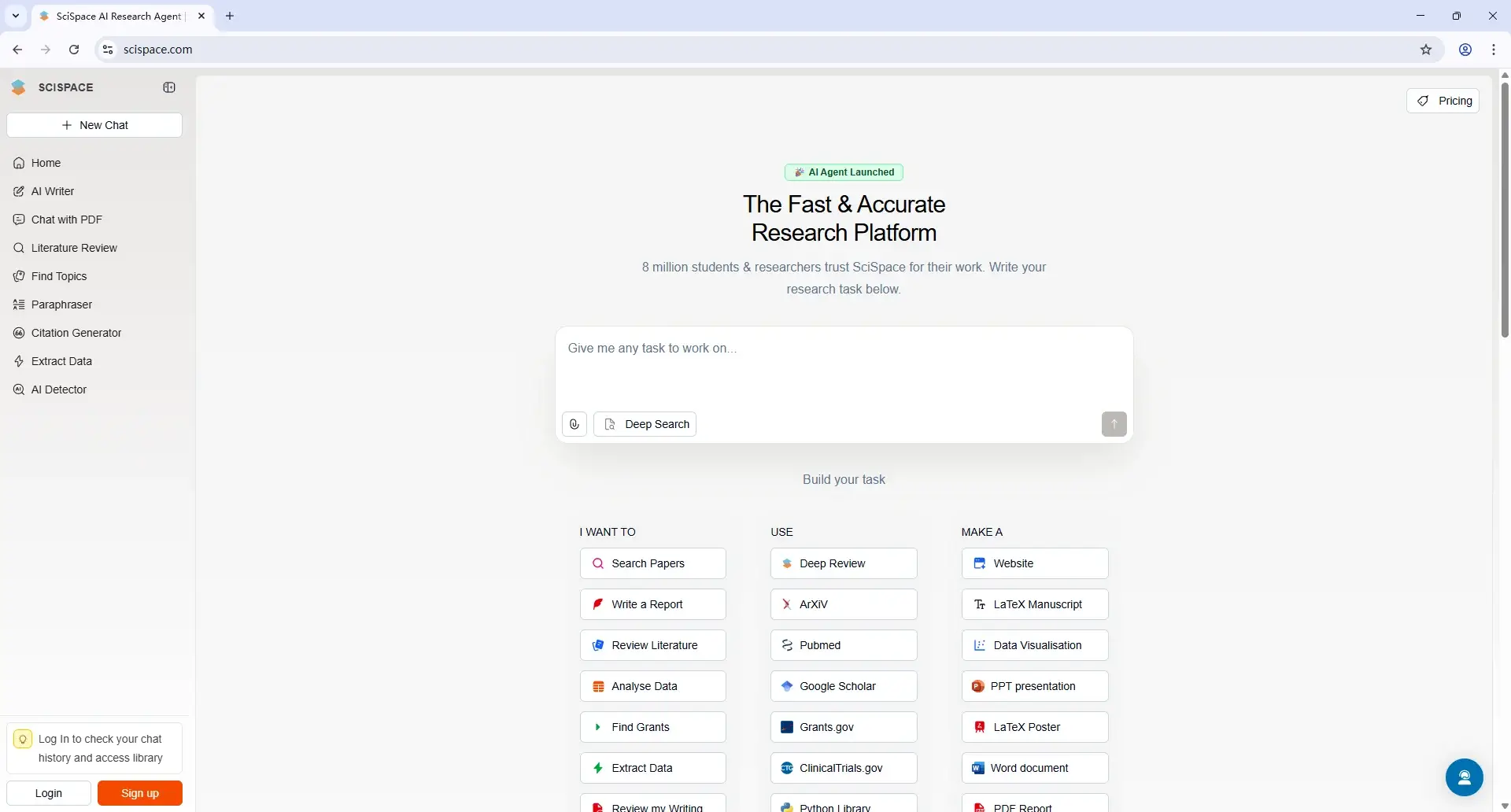
What Is SciSpace?
SciSpace is an all-in-one AI tool designed to make academic research and writing more efficient. It serves as a smart research assistant, helping students and writers navigate scholarly literature with ease.
What Is the SciSpace AI Detector?
SciSpace AI detector is a feature within the platform that identifies AI-generated content in academic writing. It works by analyzing text at the sentence level. The detector supports both pasted text and uploaded PDFs and offers two specialized modes: one for professional scientific content and another for non-scientific writing.
Extra Tools in SciSpace
AI Writer – generate drafts, summaries, or explanations of research papers.
Citation Generator – quickly build citations in the right academic format.
Paraphraser – reword text while preserving its meaning.
Literature Review – organize and analyze academic sources.
Find Topics – discover potential research ideas.
Extract Data – pull out key information from research papers.
How Accurate Is SciSpace AI Detector?
SciSpace claims its AI detector can reliably identify AI-generated content in scholarly writing, supporting both professional scientific and general texts. But how well does it actually perform in real-world situations?
To find out, we tested the detector across three different scenarios. These tests allow us to evaluate how well the detector performs with pure AI text, mixed AI-human writing, and AI content that has been humanized through paraphrasing.
Test 1: Pure AI Text
Setup: We first used a text written entirely by ChatGPT-5.
Results: The detector flagged 100% of the content as AI-generated.

Observations:
SciSpace handled this scenario accurately, identifying text that was completely machine-written.
Test 2: Mixed AI + Human Writing
Setup:
Next, we tested a paper originally written by humans before ChatGPT’s release, then continued using ChatGPT-5. The sample had 187 human-written words out of 454 total (about 41% human, 59%AI).
Results: SciSpace labeled only 19% of the text as human, marking 91% as AI.
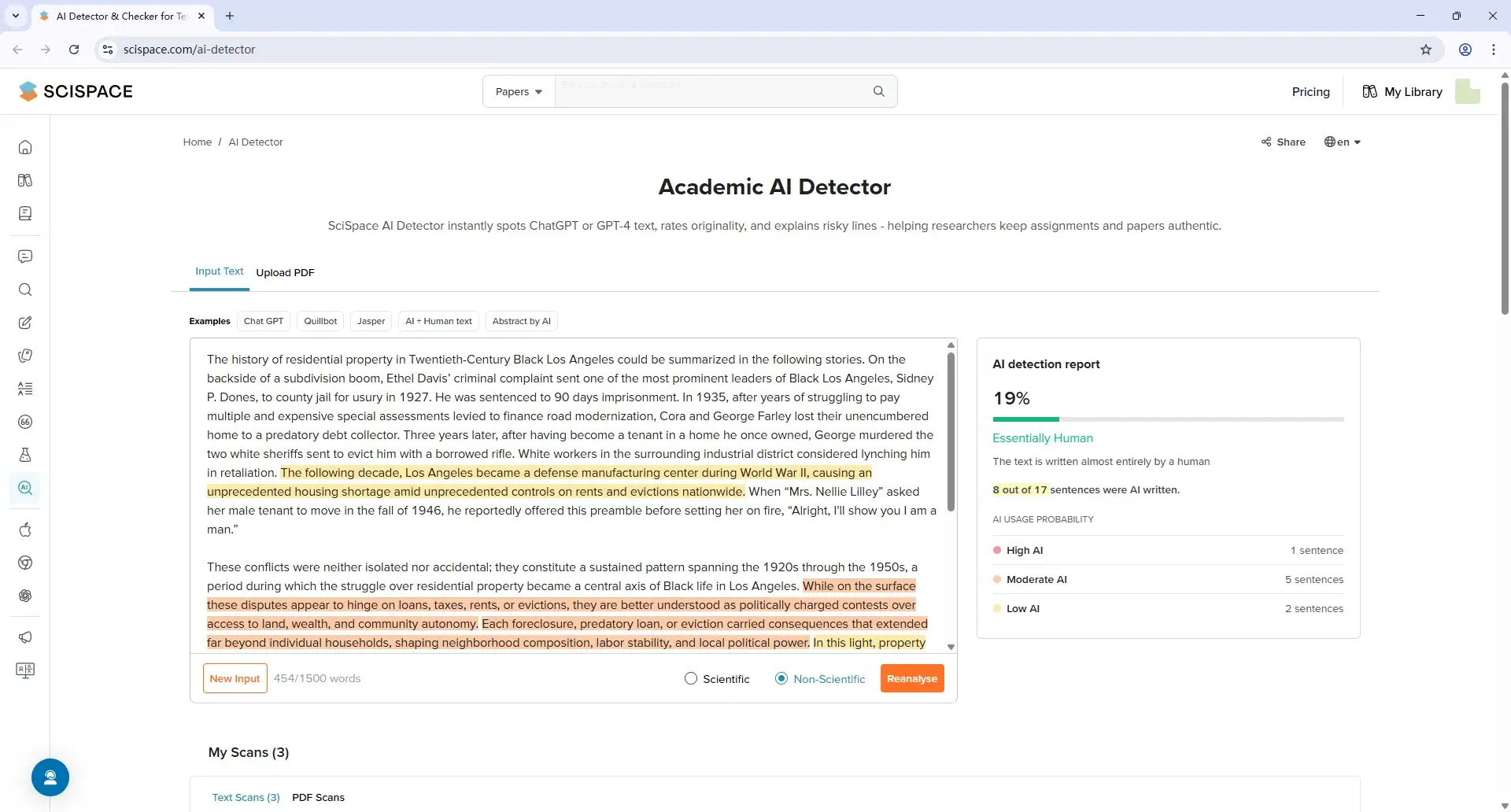
Observations:
Here, the detector overestimated AI content, failing to properly distinguish the human portions. Its accuracy drops when human and AI writing are mixed, highlighting a limitation for blended academic work.
Test 3: Humanized AI Text by QuillBot
Setup:
Finally, we took 100% AI-generated content and ran it through QuillBot AI Humanizer in basic mode, which lightly paraphrases text without changing sentence structure or underlying patterns.
Results: SciSpace still flagged 100% of the content as AI-generated.
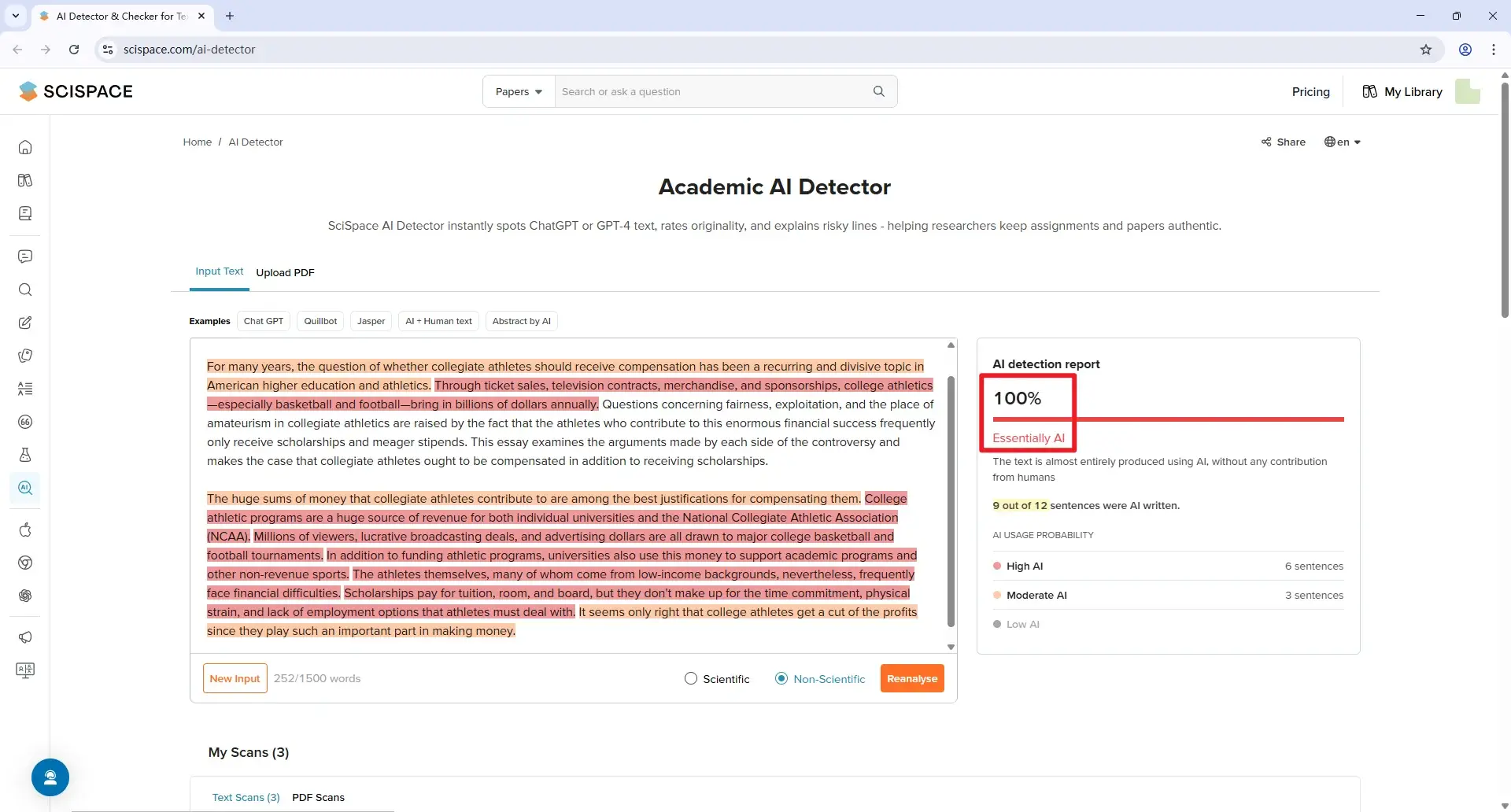
Observations:
Light humanization did not fool the detector. This suggests that SciSpace is sensitive to machine-like patterns, such as predictable sentence structure and consistent phrasing, even when words are slightly reworded.
Pros and Cons of SciSpace AI Detector
Pros
Wide AI coverage: It can detect outputs from GPT-4, ChatGPT, Jasper, and similar tools, making it useful for academic contexts.
Flexible input options: Users can either paste text directly or upload PDF files, which makes it convenient for different writing situations.
Specialized modes: Separate settings for scientific and non-scientific writing help tailor the detection process to different types of content.
Cons
Accuracy issues: Results can be inconsistent, especially with mixed human and AI text, which may confuse users.
Shallow analysis: It only evaluates writing at the sentence level and doesn’t go deeper into structural or stylistic analysis.
Language restriction: Currently, it only supports English, which limits its usefulness for international students writing in other languages.
SciSpace Pricing
Free Plan
SciSpace has a free plan that lets you scan up to 1,000 words without an account. Creating an account raises the limit to 1,500 words. The free version has basic functionality and doesn’t allow exporting results.
Paid Plans for Individuals
There are two paid options.
The Premium plan ($12/month billed annually) allows unlimited scans and includes tools like paraphrasing, literature review support, and export options.
The Advanced plan ($70/month billed annually) adds a deeper review model, multiple parallel tasks, and more credits for high-volume usage.
Plans for Teams or Organizations
SciSpace also offers custom plans starting at $8 per user per month. These include role management, enterprise-level access, and priority support for group use.
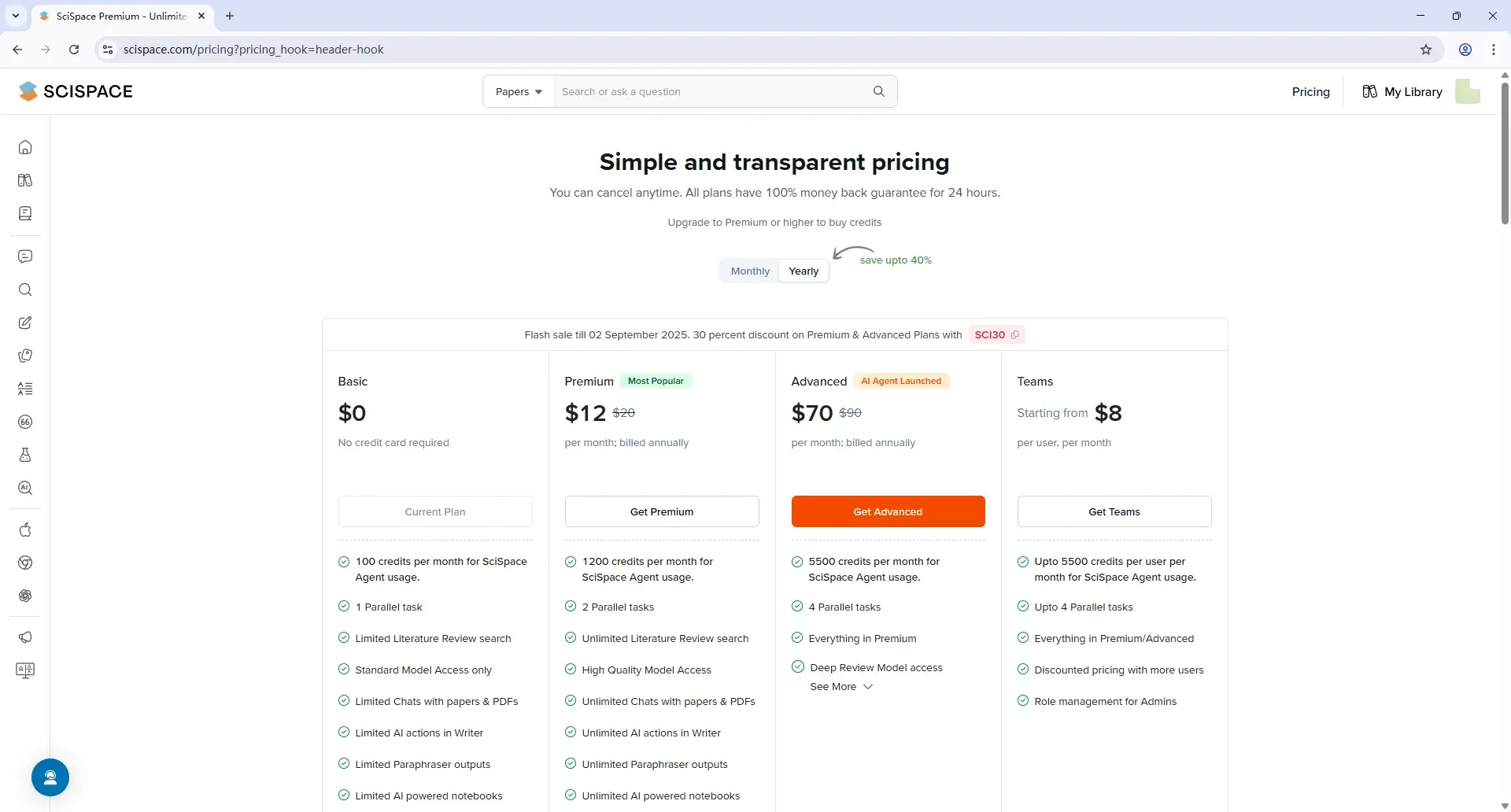
Can You Bypass SciSpace AI Detector?
The short answer is yes—but not with simple tricks. Simple rewriting or word replacement is not enough. As seen in Test 3, light paraphrasing with tools like QuillBot only changes words superficially, leaving sentence structure and predictable phrasing intact. SciSpace still flagged the text as 100% AI-generated, proving that casual edits are ineffective.
This is where EssayDone Humanizer comes in. It’s a comprehensive AI humanization tool designed to make AI-generated text read naturally and authentically. By altering sentence structure, vocabulary, and overall writing flow, it reduces the mechanical patterns that detectors look for.
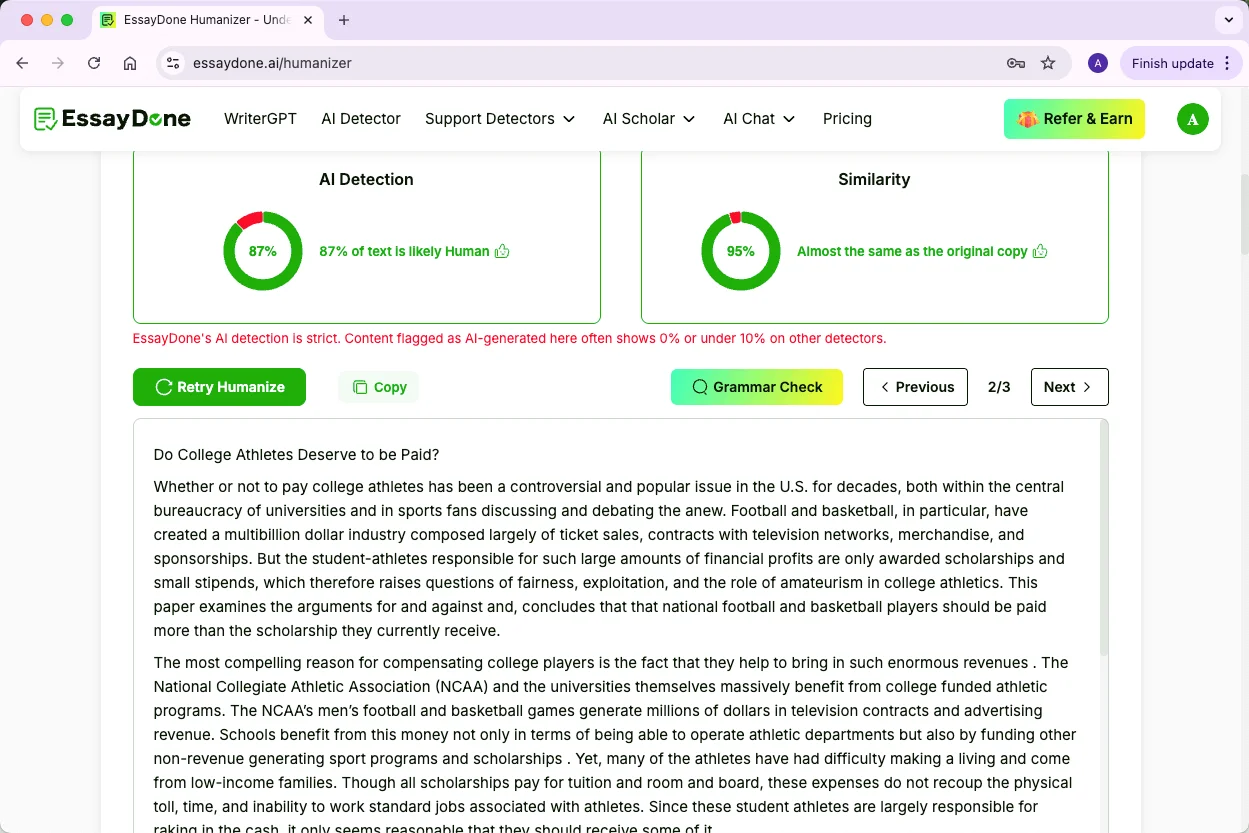
In practice, using EssayDone on the 100% AI text from Test 1 successfully lowered the AI detection score to 0%. This demonstrates that professional humanization, which targets both linguistic style and structural patterns, is far more effective than simple paraphrasing.
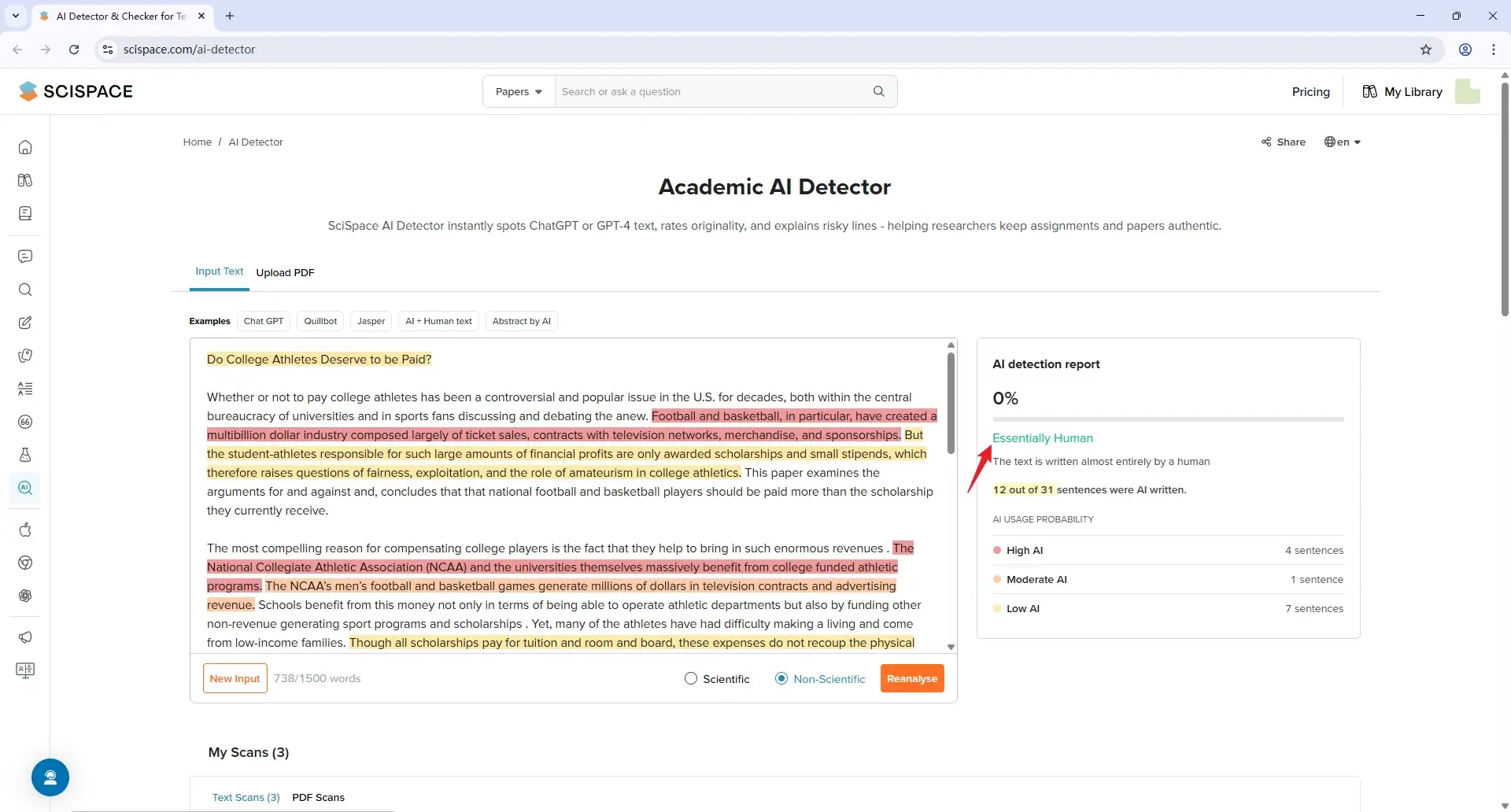
Alternatives to SciSpace AI Detector
Tool | Multilingual | Free Plan | Paid Plan | File Formats | Login Required | Sentence-Level Analysis | Extra Features |
Yes | Limited trial only | From $12.95/mo (200k words, 2k credits) | PDF, DOCX, DOC, site scans | Yes | Yes | Plagiarism check, fact check, readability, grammar, team tools, Chrome extension | |
GPTZero | Yes | 5,000 characters/test | From $14.99/mo (100k chars) | PDF, DOC, DOCX, TXT (50MB max) | Yes | Yes | Writing feedback, plagiarism check, citation tools |
Copyleaks | Yes (30+ langs) | 15,000 characters/test | From $16.99/mo (100k chars) | Copy-paste only | No | No | AI + plagiarism in one report, shared data hub, Google Docs add-on, Chrome extension |
ZeroGPT | Yes | Yes | From $9.99/mo | Text only | No | No | Plagiarism check, AI summarizer, AI paraphraser |
QuillBot | Yes | 1,200 words/test | From $8.33/mo, Unlimited Scan with premium | Multiple (DOCX, TXT, etc.) | No | Yes | Paraphraser, summarizer, grammar check, plagiarism check, text humanizer |

FAQ
Q: Is SciSpace AI detector 100% accurate?
A: No AI detector is perfect. SciSpace performs well on fully AI-generated text but can overestimate AI content in mixed human and AI writing or fail to detect lightly humanized AI content.
Q: How to bypass the SciSpace AI detector?
A: Simple paraphrasing or word replacement is not enough. Professional humanizers, like EssayDone, can adjust sentence structure, vocabulary, and flow to make AI text more natural and reduce detection scores.
Q: Will my professor use an AI detector?
A: Some professors may use AI detectors, especially for research papers or assignments submitted online. Others may rely on traditional plagiarism checks and judgment. Policies vary by school and instructor.
Q: Can I use AI detectors on my own work before submission?
A: Yes, using AI detectors on your own writing can help identify sections that might appear machine-generated and allow you to revise before submitting.
Q: Are AI detectors legal?
A: Yes, AI detectors are legal. They are tools for verifying originality, much like plagiarism checkers, and using them does not violate copyright or academic policies.
Q: Is SciSpace AI detector free?
A: SciSpace offers a free plan with limited word count and basic detection. Premium plans provide higher accuracy and additional features, including downloads and advanced functionality.
Conclusion
Alright, we’ve walked through SciSpace AI detector’s features, accuracy, pricing, and real-world tests—from pure AI text to humanized content.
You’ve also seen where it holds up and where it struggles, especially with bypass attempts.
At the end of the day, whether you’re a student, researcher, or just AI-curious, the key is knowing what SciSpace can and can’t do. Hopefully, this review gives you the clarity to use it wisely and avoid surprises.
